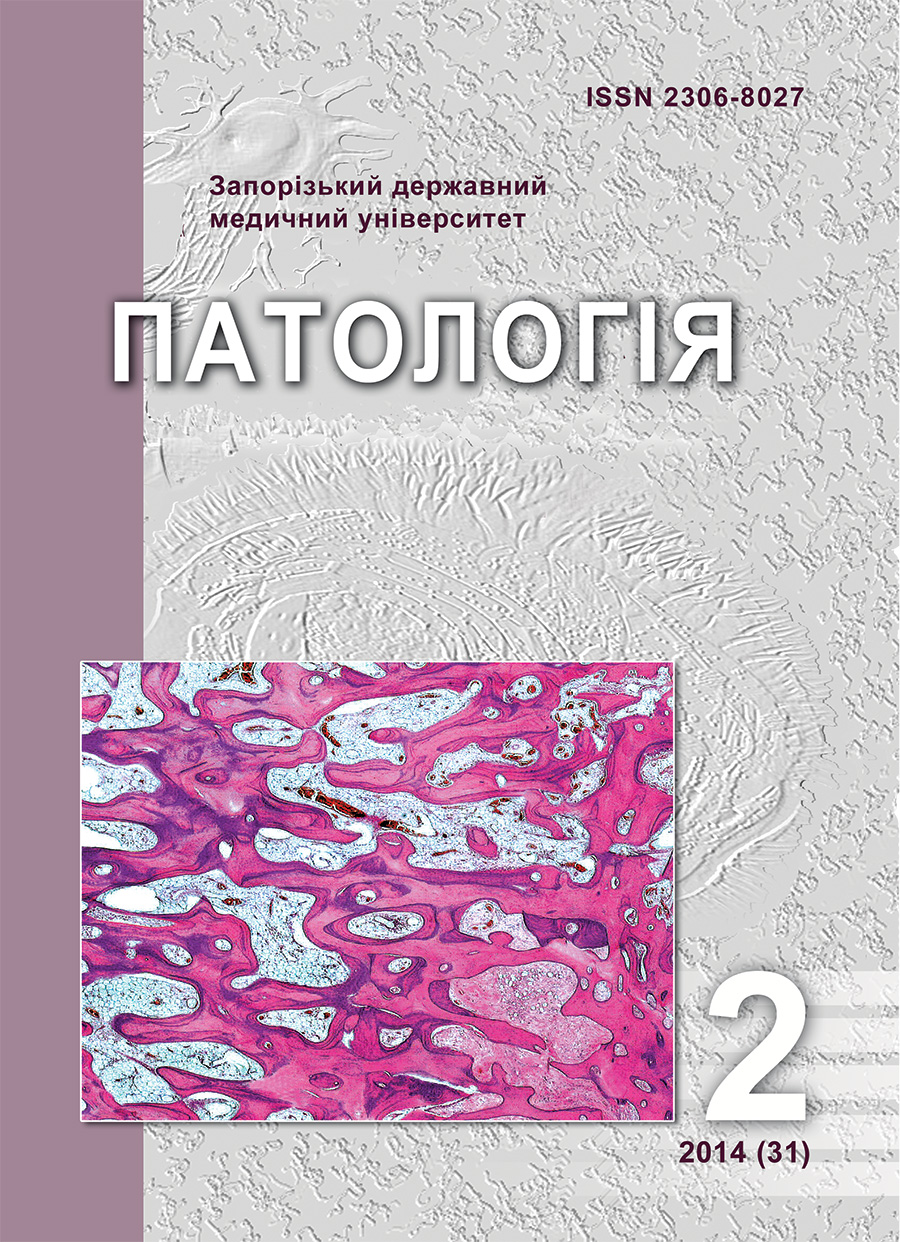Types of combined neurovascular injuries of the extremities
DOI:
https://doi.org/10.14739/2310-1237.2014.2.28600Keywords:
Vascular Injury, Nerve Injury, Angiosome, Flowmetry, Regional Blood FlowAbstract
Combined injuries of neurovascular structures are associated with poor results of limb function restoration, often lead to disability and lower quality of life.
Aim. To determine the features of regional blood flow of the extremities in patients with combined neurovascular structures injury.
Methods and results. In 98 patients indicators of limb microcirculation and tissue perfusion were established using laser Doppler. In nerve autonomous zone an increase of neurogenic tone (NT) ≥50% and a significant decrease in microcirculation (PM) ≤ 60% were registered as compared with contralateral limb.
Conclusion. 3 types of damage are pointed out, knowledge of which selects the pathogenetic types of interventions and influences treatment strategy and results of restoration of limb function significantly.
References
Aslanov, A. D., Kudryavcev, B. P., Mizaushev, B. A., Logvina, O. E., Ojtov, T. Kh. (2006). Organizacionno-diagnosticheskie i lechebnye meropriatia na dogospital'nom e`tape soprovozhdeniya postradavshikh s sochetannymi travmami pri povrezhdeniakh konechnostej [Organizational diagnostic and therapeutic measures in the prehospital support patients with concomitant injuries with injuries of extremities]. Medicina katastrof, 3, 13–17. [in Russian].
Serov, A. M. (2004). Sochetannye povrezhdenia arterii, nervov i sukhozhilij predplech'ya [Combined injuries of the arteries, nerves and tendons of the forearm]. Vestnik khirurgii, 1, 115–119. [in Russian].
Tsymbaliuk, V. І., Tretiak, І. B., & Tsymbaliuk, Yu. V. (2013). Hіrurgіchne lіkuvannia ushkodzhennia plechovogo spletennia z vykorystanniam dovgotryvaloi elektrostymuliatsіi [Surgical treatment of brachial plexus injuries using long-term electrical stimulation]. Klіnіchna khіrurgіia, 6, 59–61. [in Ukrainian].
Shtofin, A. S., Kozlov, A. V., & Arshakyan, V. M. (2009) Khirurgicheskaya taktika korrekcii funkcional'nykh i troficheskikh narusheniy u bol'nykh s povrezhdeniyami nervov [Surgical tactics correction of functional and trophic disorders in patients with nerve damage]. Polenovskiye chteniya. Abstracts of Papers of the All-Russian Scientific and Practical Conference. Sain Petrsburgs, (pp. 186–187). [in Russian].
Bosanquet, D. C., Glasbey, J. C. D., Williams, I. M., & Twine, C. P. (2014). Systematic Review and Meta-analysis of Direct Versus Indirect Angiosomsl Revascularisation of Infrapopliteal Arteries. Eur.J.Vasc. Endovasc. Surg., 48, 88–97. doi: 10.1016/j.ejvs.2014.04.002.
Glass, G. E., Pearse, M. F., & Manchacha, J.(2009). Improving lower limb salvage following fractures with vascular injury: a systematic rewiev and new management algorithm. J.Plast. Reconstr. Aesthet. Surg, 62, 571–579. doi: 10.1016/j.bjps.2008.11.117.
Moran, Steven L., Cooney, William P. (2009). Master Techniques in Orthopaedic Surgery. Soft Tissue Surgery, 1, 17–36.
Taylor, G. I., & Palmer, J. H. (1987). The vascular territories (angoisomes) of the body: experimental study and clinical applications. Br.J. Plast. Surgery, 40, 599–616. doi: 10.1016/0007-1226(87)90185-8.
Prichayudh, S., Verananvattna, A., Sriussadaporn, S., Sriussadaporn, S., Kritayakirana K., & Pak-art R. (2009). Management of upper extremity vascular injury: outcome related to the mangled extremity severity score. World J Surg, 33, 857–863. doi: 10.1007/s00268-008-9902-4.
Downloads
How to Cite
Issue
Section
License
Authors who publish with this journal agree to the following terms:
Authors retain copyright and grant the journal right of first publication with the work simultaneously licensed under a Creative Commons Attribution License that allows others to share the work with an acknowledgement of the work's authorship and initial publication in this journal.

Authors are able to enter into separate, additional contractual arrangements for the non-exclusive distribution of the journal's published version of the work (e.g., post it to an institutional repository or publish it in a book), with an acknowledgement of its initial publication in this journal.
Authors are permitted and encouraged to post their work online (e.g., in institutional repositories or on their website) prior to and during the submission process, as it can lead to productive exchanges, as well as earlier and greater citation of published work (SeeThe Effect of Open Access).

